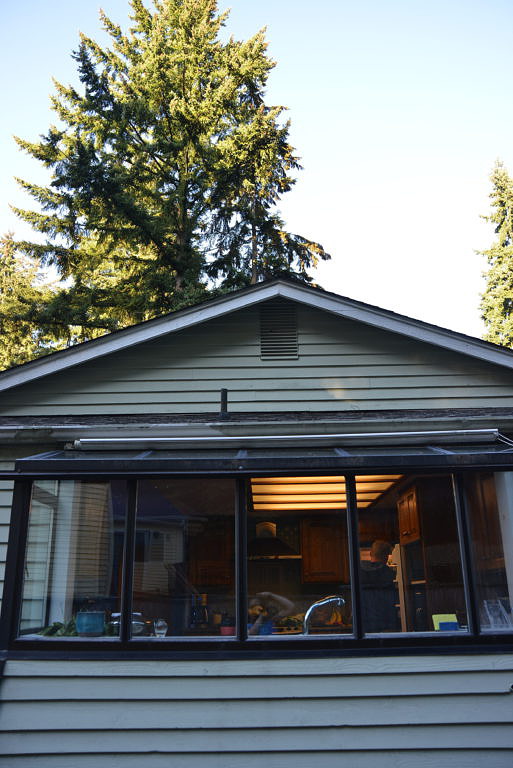Category: Uncategorized
Planting the path
I’d been saving the job of planting the thyme until the kids could help. Saturday morning, we had swim lessons then a snack, then finally we headed for the garden. I used the first pot as a demo (how to get the plant out of the pot, how to loosen the roots, how to put it down and pack around it with dirt), then both kids did two pots themselves, and I planted the sixth. It looks green and pretty, and I’m happy, and they were so proud to help. Afterwards, they applied themselves to lining their gardens with rocks, and I finished weeding the stretch by the house (which will eventually be shoveled out then covered in a thick layer of gravel, and a top layer of river rock if I can find the right kind — big enough, uniform, and an attractive grey color).
Last night, I did the real work, which was converting my 39 kinds of plants and bulbs…

… to a bloom map by month (along with color, which ranges from blue to purple to magenta, and a few near-black purples, and a few lavenders), and a list of heights and widths.

Here’s a detail view, I am so proud of it.
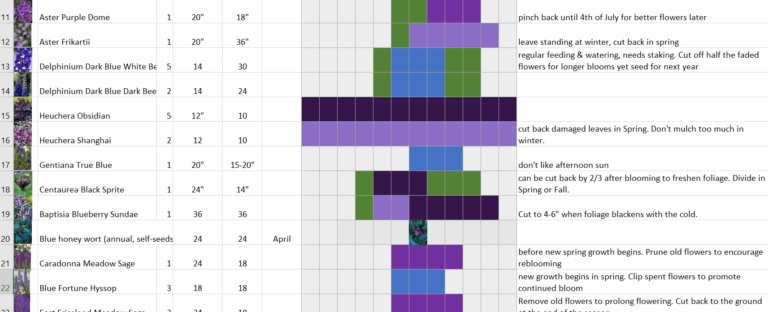
You can tell it’s the beginning of September and I had back-to-school energy that had to go somewhere. So I sharpened my Excel spreadsheet, cracked open my browser, and for the next stage, got out the graph paper and markers.
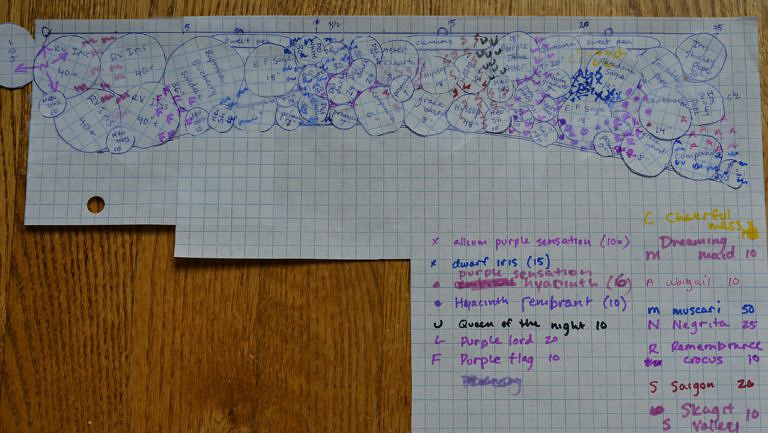
This is 56 plants (the circles) and 195 bulbs (the marker-drawn symbols — the bulbs might not all fit) in 25′ of garden that ranges from 3.5′ to 5.5′ wide. I should have blooms from Feb to November and some evergreen. Heights ranging from 7″ up to 40+. The stages are bulbs (crocus, hyacinth, tulip, allium, late-daffodils), irises, then pure flowers (asters, sages, hyssop, veronica, companula, primula, baptista, delphinium, gentiana, centaurea, clematis, sweet pea, etc.), then heuchera which bloom white in the summer but have colorful leaves nearly year-round. Except for the sweet pea, they’re all perennials or bulbs that will naturalize. The majority should not need to be watered (I think Delphinium is probably the exception, but the rest should make do). The majority should be pretty pest-resistant. (Although I’m guessing the squirrels will eat the crocuses before they even bloom, and the rabbits will think the asters are delish. Yet hope springs eternal.)
I got the first set of plants into the ground this afternoon. The remainder should be arriving 2-3 weeks from now. When they’re all in, I’ll order mulch to suppress weeds in the small spots between plants. I think it’s going to be wonderful when it’s done.
Over the winter, I’ll need to work on three trellises (one for deep purple clematis, two for “color-shift” blue/purple/magenta sweet peas).
These are late in the day photos, so the light is a bit shadowy. Claire helped me water all of the transplants! At some point I’d like to install a hose bib on this side of the house, but in the meantime a five gallon bucket full of water and a chatty four-year-old helper with a watering can works!

I designated a kids’ digging spot just south of the path out of sheer self-preservation. Claire lugged the trucks and tools there in no time flat.
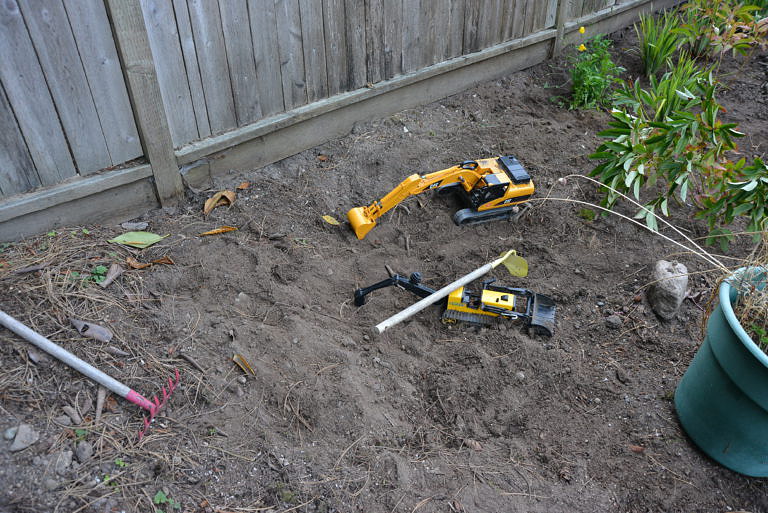
A photo that captured all of the thyme plants, plus Henry’s rock-lined garden (at right) and Claire’s (at left). Henry wants to plant his in a pattern (daffodil, tulip, carrot, daffodil, tulip, carrot). He didn’t like that I said we could plant the daffodils and tulips now, but the carrots have to wait til May. I wonder if you can over-winter carrots and then I can skip this entire argument?? I would love the gardens to be their spots, not my chance to micromanage their plans.
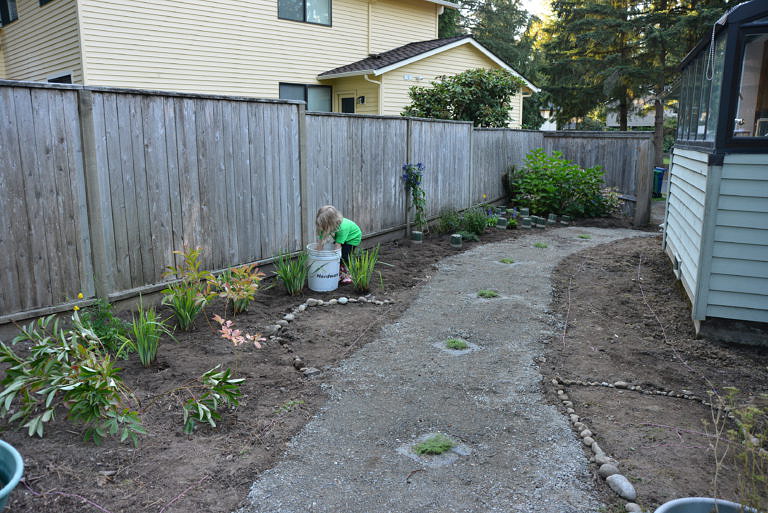
A view from the garden back to the fishtank and art table.

And of course, the afternoon of bed prep and digging wouldn’t have even happened if Kevin didn’t do the grocery store and then dinner. Standing where the Delphiniums will grow, and appreciating Kevin:

I never post photos of this side of the house. Here’s a taller shot over the roof.
